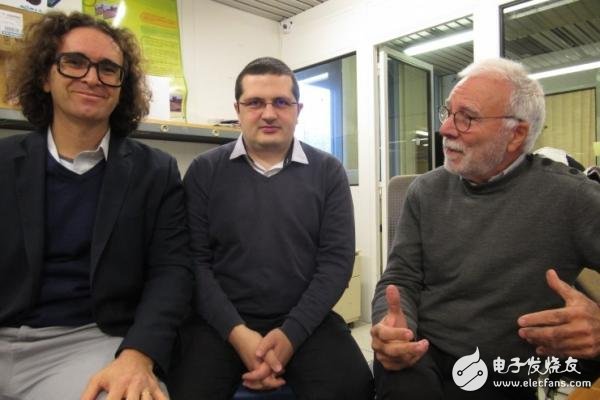The role and benefits of self-driving cars
AutoKab three King Kong: Carlos Holguin, CrisTIan Sandu and Michel Parent However, the reality is not as exciting as the release, and Navya's self-driving shuttle bus has a small car accident on the first day in Las Vegas. The media and the public, and even the community of engineers, are clamoring for the concept of self-driving cars to grab drivers' jobs. Many engineers are awe-inspiring to the super-computing power of AI, and they are beginning to think about how wonderful the connected world of cloud computing will be. For the autopilot market, almost all of the arguments have been templated. They are nothing more than saying that autonomous vehicles will make roads safer and greatly improve passengers' living efficiency. At the same time, traffic sharing solutions from self-driving cars will also reduce car ownership, and urban congestion and pollution problems will be solved. In fact, such a conclusion is somewhat utopia. The technology industry has spared no effort in selling bigger, faster, smarter technologies, and the media are cheering cheerleaders. Indeed, to demonstrate whether a technology is crushing another technology, you can find many reasons. However, when making these judgments, few people will think about a basic premise, or a question that is full of initial thoughts: Why do you want to build a self-driving car? What is it used for? Automated driving has been developed for 20 years Carlos Holguin and Michel Parent are the CEO and chairman of AutoKab, respectively. The startup is committed to “developing safety-assured automation technology for commercial fleetsâ€. The company’s office is located in the French Institute of Computer Science and Automation (INRIA), which was originally the central command of the NATO army. unit. Although only two years after its founding, AutoKab's founders are experts in the transportation industry with more than 20 years of experience in public transportation planning, road vehicle automation and operations. AutoKab's R&D center looks like a garage, with a variety of old-fashioned autopilot shuttles, golf carts and passenger cars, all of which have been the test of the past 20 years, and it has become the Automated Car History Museum. It is understood that Michel Parent's career is closely linked to the car, half of which is contributed to Stanford, MIT and INRIA related research institutes, and the other half is spent in the robot industry. He contributed a lot of ideas to the "automation" of transportation. . Parent said: "20 years ago, I always wanted to design a robot that can drive like a human. Later I asked myself a question, what is the fun of developing such a robot?" However, he thinks that the most self-examination is "we are What problem are you trying to solve?" For the city, what is to be solved is “urban diseaseâ€, that is, traffic congestion, space shortage, inconvenience in travel and energy waste. “We need public transport vehicles that can be connected and shared and faster,†says Parent. Holguin concluded: "The last mile is the most urgent problem we have to solve." “If autopilots don’t use sharing modes like buses and taxis, they can’t solve traffic congestion. In some cases, they can even increase congestion.†In his opinion, AutoKab’s goal is to solve “one car.†One person's waste of transportation resources. AutoKab's key employees come from two different worlds: “technology†and “trafficâ€. Holguin said: "We are using technology to fill the lost links in the commercial operation of autonomous vehicles." To be precise, they are developing an "automation service" product for public transport operators. Automation kit for cars and buses AutoKab specializes in the development of both security and data analytics technologies, and the company is working with cities to achieve more efficient public transportation. In fact, the name of AutoKab comes from the acronym "AutomaTIon Kits for Autos and Buses" (the automation kit for cars and buses). Of course, it also has the ability to develop hardware. CrisTIan Sandu, the company's CTO, said that AutoKab's automation kit can be installed on any vehicle, including a large number of sensors such as radar, laser radar, vision systems and processors (suppliers including Intel and NVIDIA). However, Sandu pointed out that it would take a lot of effort to install this kit perfectly on a car (depending on the vehicle, via CAN bus or FlexRay), including software calibration. Of course, it doesn't take a lifetime to install, and users can choose to uninstall the automation kit. AutoKab bets the kit not because it is interested in selling hardware, but because it is critical to reducing the cost of autonomous vehicles. Holguin also stressed that AutoKab is not interested in selling hardware. Instead, it is more focused on working with major cities to develop plans to more efficiently address the last mile of service. As for the profit model, it is divided into the profit per mile of the self-driving car. "The cost is too high" AutoKab is involved in several European projects, including CityMobil2. Holguin pointed out that in the 7-month autopilot test from October 2014 to April 2015, it achieved good results with zero accidents and carried more than 60,000 passengers. In addition, local residents’ evaluation of self-driving cars is also quite high. However, they did not know that this was just a test. More importantly, the media and the public are not concerned about the data collection problem in the test. 